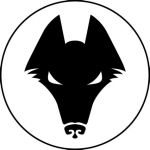Advertisement
Not a member of Pastebin yet?
Sign Up,
it unlocks many cool features!
- In the most secluded parts of Wrothgar is where orcs truly thrive. Few Bretons call the highest plateaus home save for small bands of outlaws - as well as other isolated communities that fall outside the scope of what is commonly considered Bretic society.
- One such race are the rugged Artosians. The people hailing from the aptly named mountainous region of Artosia between Wrothgaria proper and the Evermore hills, the itinerant Artosians (or the Ürtsh as they call themselves in their native tongue) live in small, poor communities atop some of the highest mountain peaks. Living in stone abodes that are built into the ground and have no windows to block out the cold, they subsist on herding goats, hunting rodents and gathering high mountain roots. For ages, they have moved from mountain to mountain with the goat herds, cutting paths into the mountains they call home. The very world that surrounds them has a religious significance to the Artosians. Each clan has its own ancestral paths that comprise these primitive societies' territory that other tribes cannot walk without permission from the tribe elder. All along the paths, piles of rocks indicate the final resting places of those that have already passed into the spirit world; each pile is named after its inhabitant and tribes can name them fervently, giving special attention to the oldest piles.
- Although lacking a written language (outside of select stone markings they keep mum about to outsiders), the Artosians keep a calendar according to their movement from one mountain shelter to the other. Their tongue is an anomaly, bearing no similarity to any variety of Bretic. It is only through the ancient whistled language that they can truly be understood, for few outsiders have ever learned Artosian and the only actual "neighbours" to the nomads are the orcs - who know not to intrude on Artosian holy paths.
- Another isolated race is spread across much of the Wrothgarian mountains, living in small villages hidden away from civilisation; the Breto-Orsimer half-caste. Shunned by people of both their parent races, the Man-Orcs of High Rock - who are known to Bretons as the "pig people" and to Orcs as "the sick-skinned" - chose exile, coming together in small communities where they could live in peace. Some can pass as members of one of the two races and may even manage to live an undisturbed civilised existence (at least until one of their offspring come to exhibit traits characteristic to the opposite race), but the majority of the poor souls exist in a limbo; one may, for example, spot a blonde-haired maiden with a snout washing clothes by a brook, a toothless orc elder who looks like he was born with albinism, and groups of rowdy children who would easily fit on a street of any peninsular village were it not for the two protruding canines.
- The treatment of orcbloods varies from one location to another; some cities allow them to live in run-down ghettoes and have them work the dirtiest of jobs, cleaning the gutters or burying the dead. The Man-Orcs are prohibited from interacting with society at large and there are complicated rules in place regarding their relationship with Bretons as well as the style of clothing they are allowed to wear and which can identify even the more ambiguous of appearance. Elsewhere, they may be allowed to enter Bretic settlements on certain days to trade but are otherwise relegated to less-wanted areas, often near dumping areas or on river shores with a high flooding risk. Other settlements do not allow them at all, just as they do not allow orcs; the Breto-Orsimer know better than to approach those villages, for pogroms against their kind go largely unpunished. In fact, even communities or individual families living away from settled Bretons in isolation may find themselves under attack.
- Unsurprisingly, living in a parallel society with little to no common backing, Breto-Orsimer are often targeted by bandits who can raid and ambush indiscriminately; some warlords find them a valuable source of slaves or simply conquer their villages and rule over them as brutal feudal lords. “Proper” landowners sometimes target them, as well, employing knightly orders or mercenaries to drive the unwanted occupants off their land. Those mercenaries are known as orc-hunters; little sets them apart from common bandits, save for paperwork signed by one nobleman or another which allows them free reign to raid and kill Orsimer. Because of their Orcish ancestry, the half-castes are considered fair game as well.
- Other skirmishes are less organised. In times of famine, disease or other disasters, orcbloods have historically often served as a convenient scapegoat, their communities attacked by angry masses of peasants out for blood.
- An unknown number of Breto-Orsimer have managed to remain hidden among the rest of society, being blessed with non-ambiguous looks. Nevertheless, there is always a risk of the “wrong” traits appearing in their new-born, so not every mixling is able to live his whole life in such accommodations.
- Just like their blood, the language of Orcbloods is mixed as well. In fact, there are as many tongues as there are communities. The Man-Orcs living on the outskirts of Breton cities and villages speak dialects with very little Orcish influence. Others speak nearly perfect Orcish, which allows them to live under the protection of their half-brothers; they fill the lowest rungs of tribal society and face many restrictions similar to those of their kin living closer to Bretons, but this relationship is nevertheless far more cordial.
- Another category are Man-Orcs speaking a unique tongue, one which combines local Bretic and Orsimer dialects into a creole that is largely alien to both Breton and Orc alike.
Advertisement
Add Comment
Please, Sign In to add comment
Advertisement

